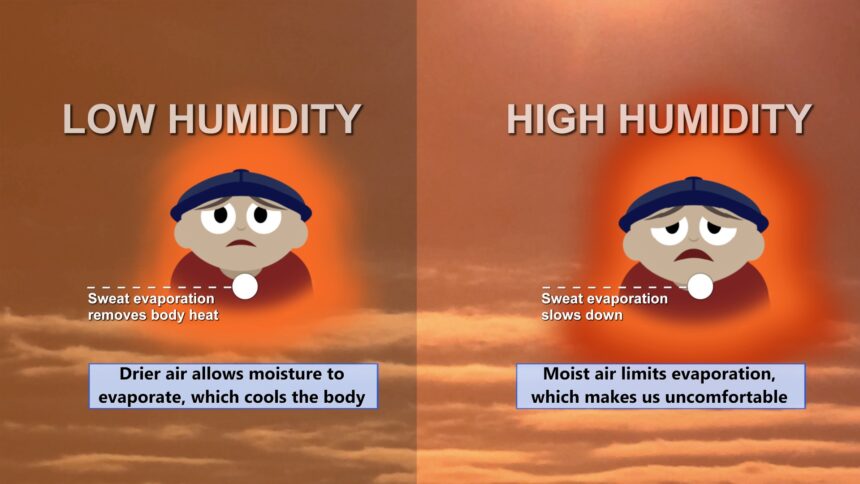“It’s not the heat, it’s the humidity” – Heat index explained

ST. JOSEPH, Mo. (News-Press NOW) -- The Midwest is known for a few things—friendly people, agriculture and a wide variety of weather.
Summers here are especially known for being hot and humid. You’ll often hear the saying, “It’s not the heat, it’s the humidity,” and there’s a reason for that. When humidity is high, it can feel much hotter than the actual air temperature.
The heat index, or the feels-like temperature, is how hot it actually feels when you combine the air temperature with humidity.
When the air is humid, your body can’t cool off as easily. Normally, your sweat evaporates to release heat—but with more moisture in the air, that evaporation slows down. So your body stays hotter, longer.
On the opposite end, when the air is dry, sweat evaporates faster, helping your body cool down quickly.
While humid air is common across large swaths of the U.S. during the summer season due to an abundance of Gulf moisture spreading northward, humidity can rise even higher due to local agriculture.
Known as "corn sweat" a mature crop of corn can increase moisture in the air due to evapotranspiration, a natural process that transfers moisture from plants and vegetation into the surrounding air.
This effect is most pronounced in mid to late summer when corn is at its maximum height, in regions where it's a primary crop.





